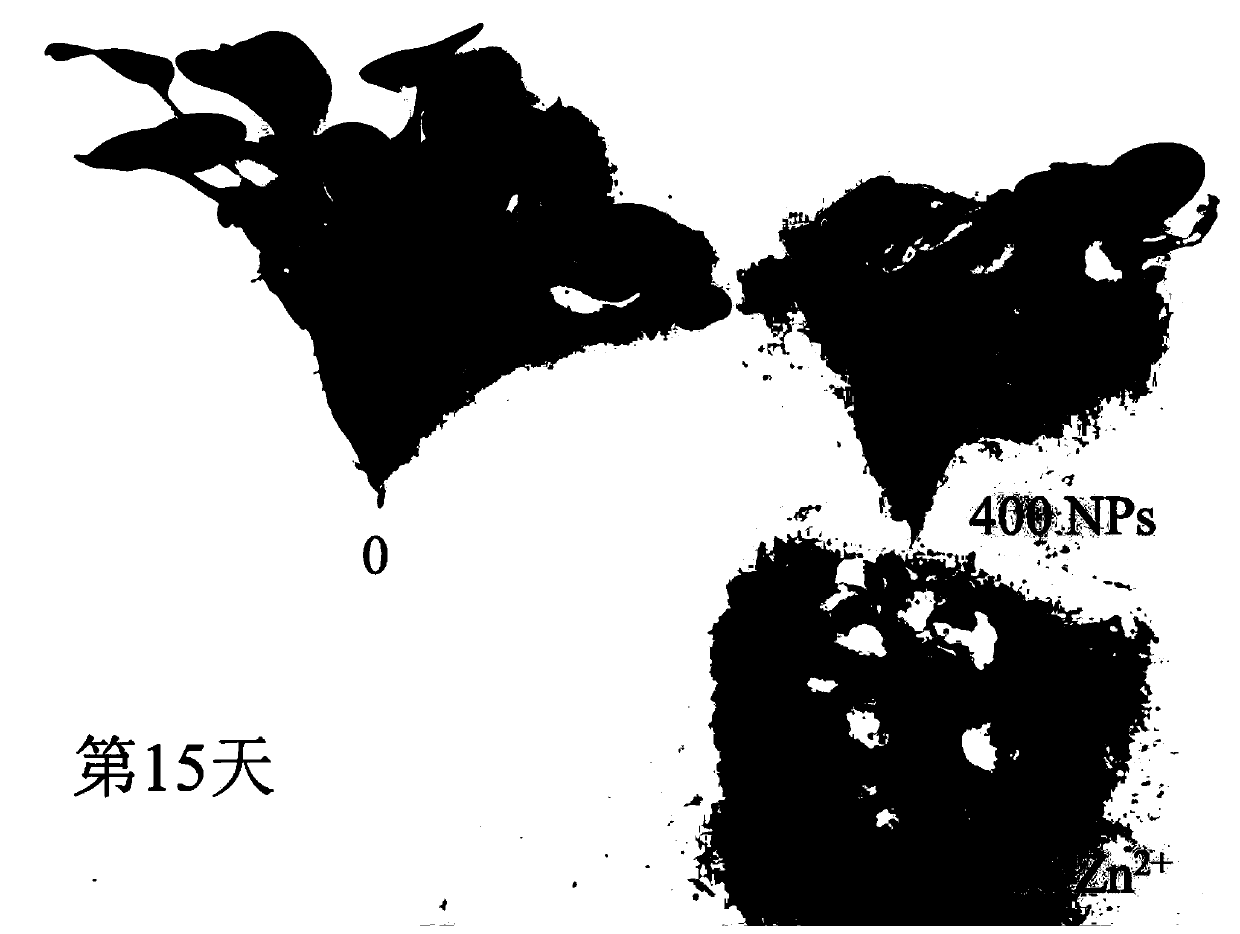Method for preparing photocatalytic biochar composite material by using eichhornia crassipes to accumulate nano-zinc oxide
A technology of nano-zinc oxide and composite materials, which is applied in the field of photocatalytic materials, can solve the problems of cumbersome steps, increased consumption of experimental materials and reagents, and complicated operations, so as to improve the photocatalytic effect, avoid calcination and agglomeration deactivation, and reduce hazards Effect
- Summary
- Abstract
- Description
- Claims
- Application Information
AI Technical Summary
Problems solved by technology
Method used
Image
Examples
Embodiment 1
[0037] A method for preparing a photocatalytic biochar composite material by using water hyacinth to accumulate nanometer zinc oxide, the specific steps are as follows:
[0038] (1) Take water hyacinths grown in natural lakes with a fresh weight of 20-30 g and consistent growth, wash them with distilled water and prepare them for use, prepare Hoagland nutrient solution and nano-zinc oxide solution (crushing with an ultrasonic crusher for 1 hour), Mix 5mL of nutrient solution with the nano-zinc oxide solution after ultrasonic crushing for 1h, add distilled water to make 1L culture solution (in which the concentration of nano-zinc oxide is 100mg / L), put water hyacinth in the culture solution and test it under laboratory conditions. For cultivation, the laboratory conditions are 12 hours of light during the day, the light intensity is 12000 Lux, and 12 hours in the dark at night, and the day and night temperatures are 24°C and 22°C respectively;
[0039] (2) After the water hyaci...
Embodiment 2
[0045] A method for preparing a photocatalytic biochar composite material by using water hyacinth to accumulate nanometer zinc oxide, the specific steps are as follows:
[0046] (1) Take water hyacinths grown in natural lakes with a fresh weight of 20-30 g and consistent growth, wash them with distilled water and prepare them for use, prepare Hoagland nutrient solution and nano-zinc oxide solution (crushing with an ultrasonic crusher for 1 hour), Mix 5mL of nutrient solution with nano-zinc oxide solution after ultrasonic crushing for 1h, add distilled water to make 1L culture solution (wherein the concentration of nano-zinc oxide is 200mg / L), put water hyacinth in the culture solution and test it under laboratory conditions. For cultivation, the laboratory conditions are 12 hours of light during the day, the light intensity is 12000 Lux, and 12 hours in the dark at night, and the day and night temperatures are 24°C and 22°C respectively;
[0047] (2) After the water hyacinth i...
Embodiment 3
[0053] A method for preparing a photocatalytic biochar composite material by using water hyacinth to accumulate nanometer zinc oxide, the specific steps are as follows:
[0054] (1) Take water hyacinths grown in natural lakes with a fresh weight of 20-30 g and consistent growth, wash them with distilled water and prepare them for use, prepare Hoagland nutrient solution and nano-zinc oxide solution (crushing with an ultrasonic crusher for 1 hour), Mix 5mL of nutrient solution with the nano-zinc oxide solution after ultrasonic crushing for 1h, add distilled water to make 1L culture solution (in which the concentration of nano-zinc oxide is 400mg / L), put water hyacinth in the culture solution and test it under laboratory conditions. For cultivation, the laboratory conditions are 12 hours of light during the day, the light intensity is 12000 Lux, and 12 hours in the dark at night, and the day and night temperatures are 24°C and 22°C respectively;
[0055] (2) After the water hyaci...
PUM
 Login to View More
Login to View More Abstract
Description
Claims
Application Information
 Login to View More
Login to View More - R&D
- Intellectual Property
- Life Sciences
- Materials
- Tech Scout
- Unparalleled Data Quality
- Higher Quality Content
- 60% Fewer Hallucinations
Browse by: Latest US Patents, China's latest patents, Technical Efficacy Thesaurus, Application Domain, Technology Topic, Popular Technical Reports.
© 2025 PatSnap. All rights reserved.Legal|Privacy policy|Modern Slavery Act Transparency Statement|Sitemap|About US| Contact US: help@patsnap.com



